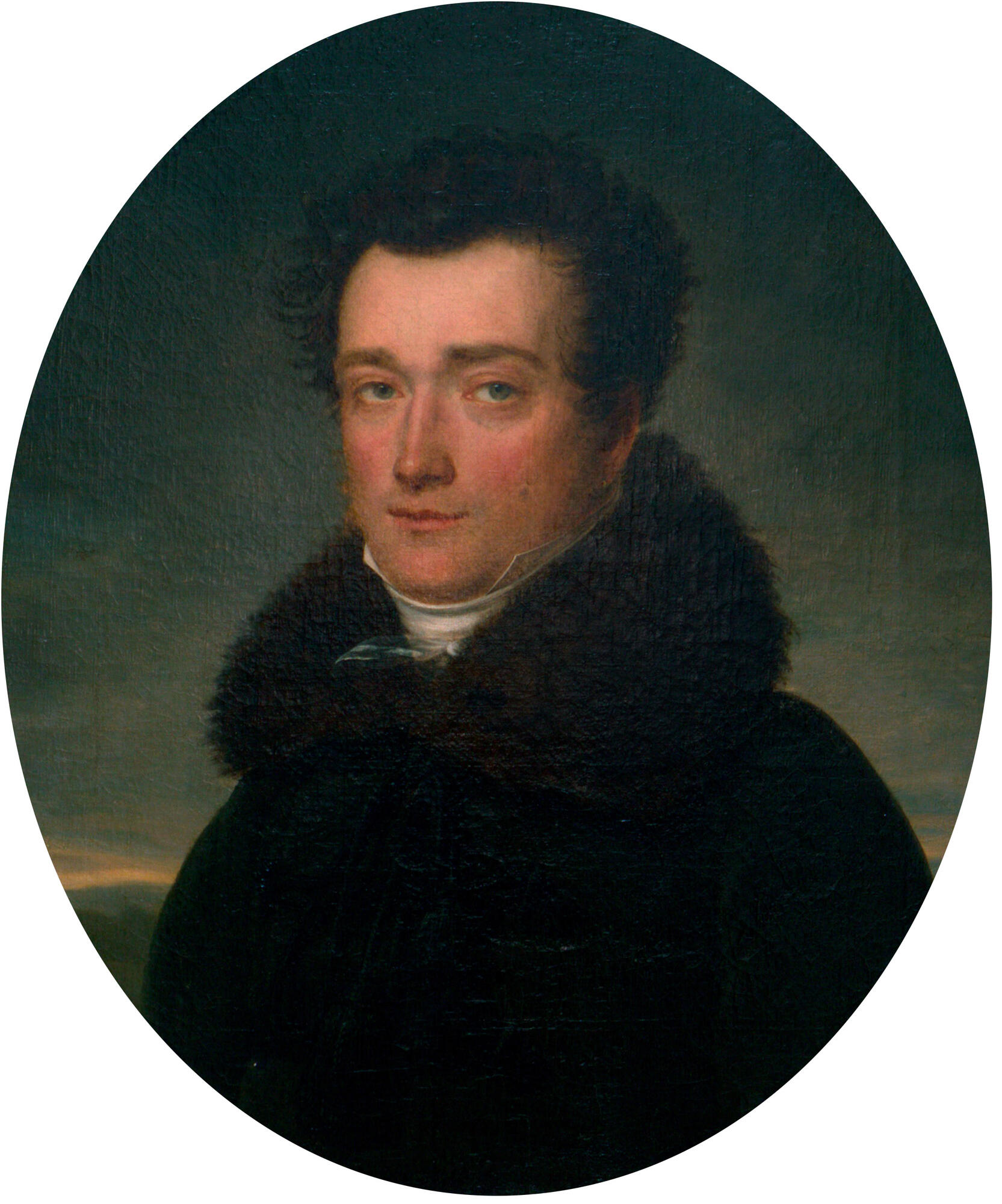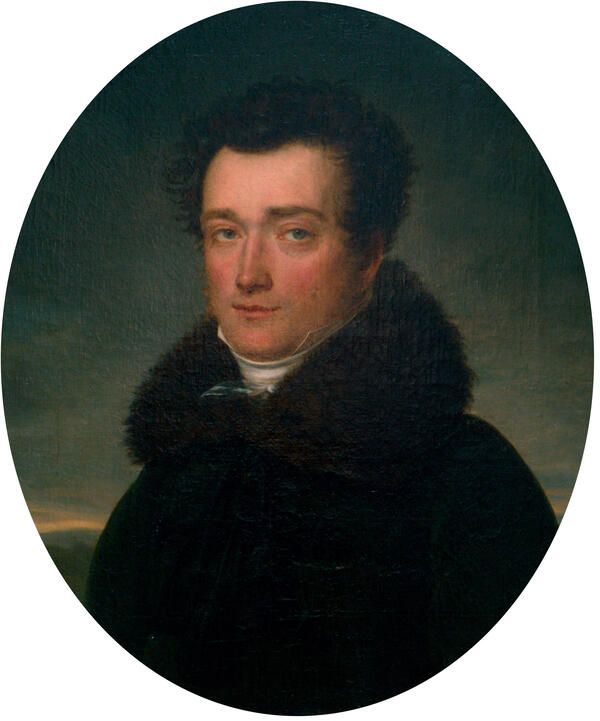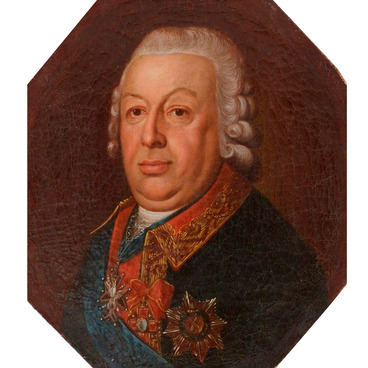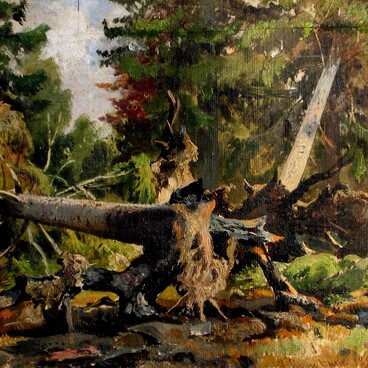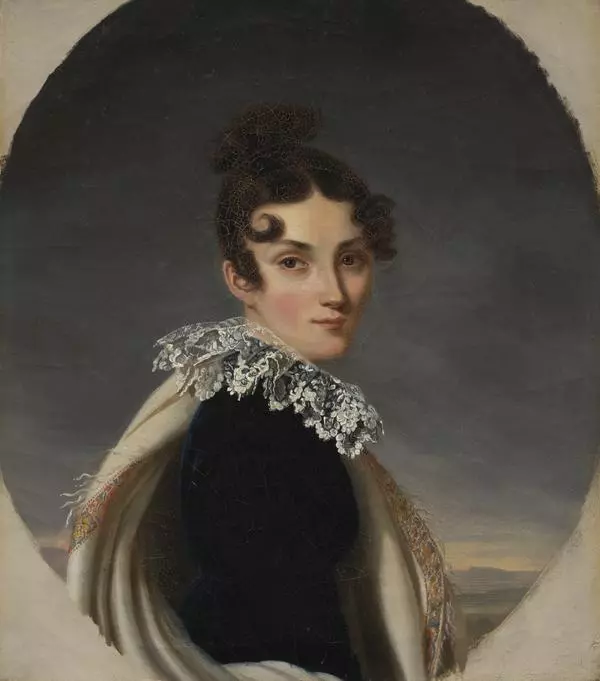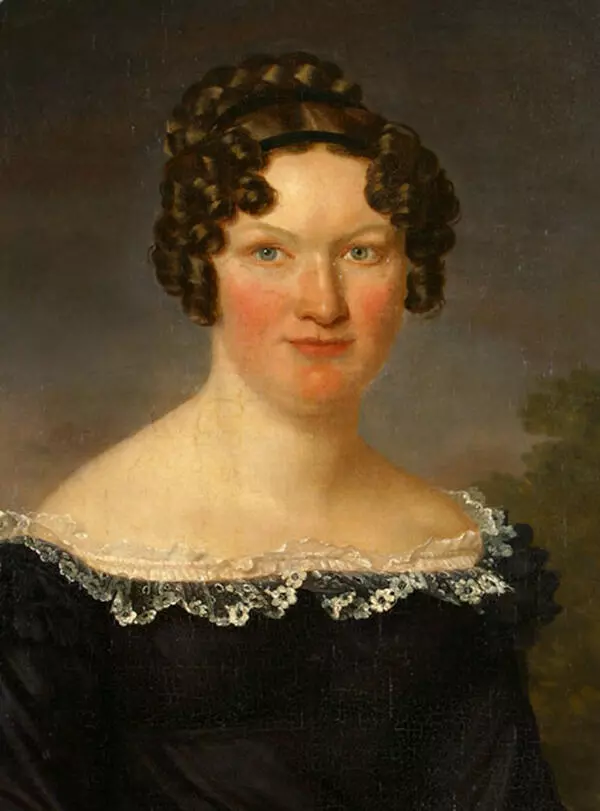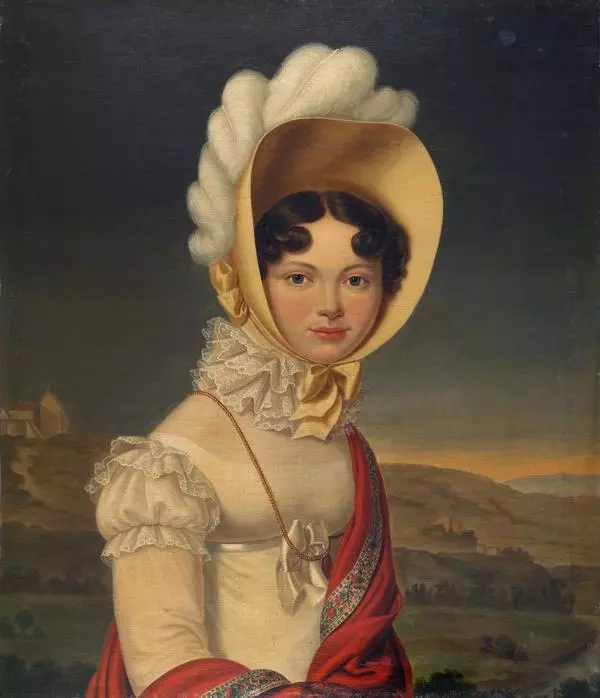Alexander Dmitrievich Olsufyev (1790-1853) was the eldest son of State Councilor Dmitry Adamovich Olsufyev and Daria Alexandrovna, nee de Litsyna. Alexander Olsufyev was educated at home, after which he began his service in the Moscow archive of the Collegium of Foreign Affairs. In 1812, he begged to send him to the army, where during the Battle of Borodino he found himself in the thick of the combat - on the Bagration flèches (special fortifications defended by the troops of General Pyotr Ivanovich Bagration). As a diplomatic official, Count Olsufyev was supposed to be in the village of Semenovskoye, but he had a different fate: when Bagration was wounded, Olsufyev carried him out of the battlefield, and then delivered to Moscow. He received a snuff-box with a miniature portrait and a lock of the commander’s hair, enclosed in a lid, as a token of Bagration’s gratitude. The young officer with the rank of staff captain continued to serve in the Akhtyrka hussar regiment and took part in overseas campaigns. After the regiment was reorganized due to heavy losses, he served in the Life Guards Horse-Jaeger Regiment, from where, after being wounded, he resided in 1817. According to one version, the heroic image of Olsufyev served as the prototype of Pierre Bezukhov in Leo Tolstoy’s novel “War and Peace”.
Alexander Olsufyev was married twice. His first wife was Maria Pavlovna Kaverina, and after her early death, the count married for a second time to the widow of Karl Antonovich de Balmen - Maria Vasilyevna, nee Naryshkina.
Henri-Francois Riesener painted a portrait of Olsufyev after he left his military career. In 1817, with the rank of staff captain, he retired due to health troubles and settled in Moscow. The hairstyle of the model corresponds to the fashion of the early 19th century. Men’s wigs are finally a thing of the past, giving way to individual strands and curls, combed with some carelessness, which gave the image some romance and a sense of freedom. In his work, Riesener showed the hero as a socialite with a dreamy and kind look and a slight blush on his cheeks.
In real life, Olsufyev was not the romantic dreamer that we see him in the portrait. Being an energetic and courageous person, he preferred military field instead of the diplomatic. The portrait of Alexander Dmitrievich Olsufyev was painted in the style of early romanticism. The painter managed to convey the individuality of the portrayed, the beauty and richness of his inner world. Riesener, following the traditions of romantic style, paints a portrait against the background of a landscape - a dark, restless stormy sky, covered with clouds, which emphasizes the general mood of the picture - the image of a person whose feelings echo the state of the natural elements.
Alexander Olsufyev was married twice. His first wife was Maria Pavlovna Kaverina, and after her early death, the count married for a second time to the widow of Karl Antonovich de Balmen - Maria Vasilyevna, nee Naryshkina.
Henri-Francois Riesener painted a portrait of Olsufyev after he left his military career. In 1817, with the rank of staff captain, he retired due to health troubles and settled in Moscow. The hairstyle of the model corresponds to the fashion of the early 19th century. Men’s wigs are finally a thing of the past, giving way to individual strands and curls, combed with some carelessness, which gave the image some romance and a sense of freedom. In his work, Riesener showed the hero as a socialite with a dreamy and kind look and a slight blush on his cheeks.
In real life, Olsufyev was not the romantic dreamer that we see him in the portrait. Being an energetic and courageous person, he preferred military field instead of the diplomatic. The portrait of Alexander Dmitrievich Olsufyev was painted in the style of early romanticism. The painter managed to convey the individuality of the portrayed, the beauty and richness of his inner world. Riesener, following the traditions of romantic style, paints a portrait against the background of a landscape - a dark, restless stormy sky, covered with clouds, which emphasizes the general mood of the picture - the image of a person whose feelings echo the state of the natural elements.
